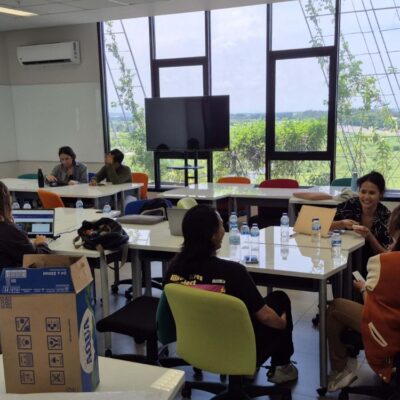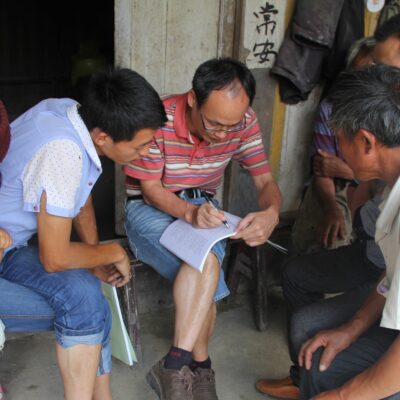Second language learning is not only instrumentally beneficial, such as increasing employability, but also relationally and educationally beneficial by helping establish new interpersonal relations, access alternative ways of thinking, and become more reflexive. In my 30 years of teaching and researching Japanese language, I have witnessed many students who have life changing experiences through learning Japanese. The same can be said for learners of other languages.
It does not take much time to see their first sign of change. Commonly in the first few weeks, they are destabilised to learn the fact that there are multiple first and second person pronouns in Japanese. In English, the first-person pronoun singular is ‘I’ and the second is ‘you’. In Japanese, ‘I’ can be watashi, atashi, kochira, boku, ore, jibun, temae, and etc., and ‘you’ can be anata, anta, sochira, otaku, kimi, omae, temee, and so on. Students will come to understand that ‘I am who I am in relation to you’ and ‘you are who you are in relation to me’ and their sense of self is questioned, in a manner that indivisible, self-contained, non-negotiable, fixed ‘I’ is questioned. This is one of many examples affecting learners’ world views, and other Asian languages have much to offer in different ways.
Learning Asian languages in particular paves the way for connecting with and better understanding diverse people, cultures and religions in Asian countries and Asian-Australian diaspora communities in Australia. They enrich us personally, socially and economically.
The problems
For the contributors to this special edition of Melbourne Asia Review on reimagining narratives of Asian language education in Australian universities, the importance of Asian languages cultures are intrinsic and axiomatic. But ‘Asia literacy’ in Australia is in decline and has been for decades, despite the rising political and economic importance of Asia and individual nations within it.
Anne McLaren argues that it is more important than ever before for Australia to produce China specialists with advanced language skills capable of playing a significant diplomatic role in bi-lateral relations with mainland China. She documents that Australian higher education has produced many China specialists through Honours programmes in Chinese studies, but that there is a sharp decline in enrolment numbers across Australia. McLaren explores the reasons behind this and makes the case for ‘a sovereign China knowledge capability’ to meet emerging challenges.
Michelle Kohler writes that the Indonesian language could be considered the ‘poster child for the failing narrative of languages studies in Australian education’. She articulates a theme that strongly emerges in this special edition: That current utilitarian narratives associated with learning Asian languages, particularly related to economic incentives are not resonating with students. Kohler argues for a change of perspective to the teaching of Indonesian to focus more on what has shaped Indonesian language(s) and culture(s), such as ‘struggle, revolution, inequality, corruption, faith and diversity’ to provoke learners to explore and reflect on their experiences and related global issues. Learning Indonesian has ‘transformative potential’ by engaging students in concepts of ‘equality, justice, truth, community’.
The argument that language students want a deeper and more personal connection to other individuals and cultures is developed in different ways and in different language contexts by Tarek Makhlouf and Abdul-Samad Abdullah in relation to Arabic, and Hiroko Ohashi and myself in relation to Japanese. Research into the motivations of students studying Arabic shows that students are more interested in ‘culture’ than ‘jobs’. If the role of the university is to foster critical thinking and develop interculturally informed citizens, the Arabic language can offer wide historical and temporal breadth and rich theoretical depth, argue Makhlouf and Abdullah. Similarly, Japanese language learners, initially inspired by an interest in anime and other popular culture, are motivated in the longer term by the language and culture that provides them with alternative world views and new ways of being and knowing about themselves and others through intercultural learning.
The solutions
Our authors, academics who engage in teaching and researching Asian languages and societies, provide informed suggestions for making language teaching more aligned with students’ motivations.
In the context of Chinese language teaching, Jonathan Benny highlights the importance of embedding critical thinking in relation to culture in language classrooms if students are to achieve ‘communicative and intercultural competence’. He sees great potential in Delia Lin’s concept of ‘Double Writing’ by directly drawing on using the perspectives of emic (cultural insider, heritage language learners) and etic (cultural outsider, non-heritage language learners). A specific illustration of the important of teaching language and culture in context is provided by Yang Wang through her analysis of the use of the word xiansheng. In modern Chinese, students are taught that xiansheng should be used as a translation of Mister/Mr and gentleman. But Wang points out that, historically, xiansheng’s use was less gendered, which is important in understanding current debates in China about whether it’s appropriate to use the term as a title for women and what this debate indicates about the state of feminism and gender equality.
Ian Woolford introduces five principles for a gender inclusive classroom in the context of Hindi language learning. He argues that there is a pressing need for evaluation of how language teaching can better accommodate genderqueer individuals; and that Hindi is undergoing linguistic innovation despite the idea that it is a gendered language and that queer identities are foreign to India as a modern Hindu nation.
Kaya Oriyama and Naomi Kurata argue for inclusivity in the context of Japanese language teaching and assessment. The authors have researched the experiences of young adult Japanese Australians who have commonly been born in Australia or migrated to Australia when very young and who have a Japanese mother and an Australian father. The authors argue this group should not be assumed to fit neatly into existing classifications as heritage language learners or community language learners.
Howard Manns et al. and Nicola Fraschini advocate the need for infrastructure that facilitates collaboration between teachers in the development of teaching/learning materials and the exchange of information and ideas. The research of Manns et al. focuses on Indonesian teachers’ need for open educational practices to reinvigorate the Indonesian language curriculum at secondary school and tertiary level and attract more students. They argue Indonesian language teaching needs a central, well-curated and sustainable hub, where Indonesian teachers can interact with one another, universities and other stakeholders in the Australia-Indonesia relationship. Fraschini looks at the Korean language context, which has witnessed an unprecedented increase in student numbers at the tertiary level in Australia over recent years, but student enrolment at the secondary school level remains low. He advocates for more collaboration involving secondary and tertiary education sectors, as well as funding bodies, to establish a consortium to develop Korean language teaching and learning resources to motivate and stimulate learners.
Then there’s the digital disruption of language teaching and learning accelerated by the COVID-19 pandemic. Tracy Hong and Hui Huang have conducted new research into the motivations of tertiary Chinese language learners in Australia and found that online and in-person modes of teaching have both positive and negative elements, but that online modes could enhance students’ experiences of in-person learning.
There are some success stories. Rowena Ward suggests that re-assessment of why Japanese language education in Australia has been successful in increasing student numbers may provide guidance on counteracting declines in other Asian languages. Ward identified three elements which have contributed to increasing the success of Japanese: national language policies which were the driving force behind increasing the numbers of both teachers and learners; Japanese popular culture which spark interest in Japanese language learning; and on-going support from funding bodies (in this context the Japan Foundation).
There is a strong belief among all authors to this edition that learning Asian languages not only increases employability, but also, very importantly, provides learners with educational opportunities to open their minds and broaden their worldview. We argue that learning an Asian language ‘is a powerful tool to foster intercultural learning, through which learners question their conventional understanding of the world from others’ perspectives’. Therefore, learning an Asian language can serve ‘as a bulwark against rising nationalism, xenophobia or nativism by promoting cosmopolitanism and developing a sense of responsibility by focusing on common challenges’ that the 21st century global community is facing.
Image: Australian graduates at the Australian Embassy in Jakarta ‘Gig on the Green’. Credit: Australian Embassy Jakarta, 2019.




